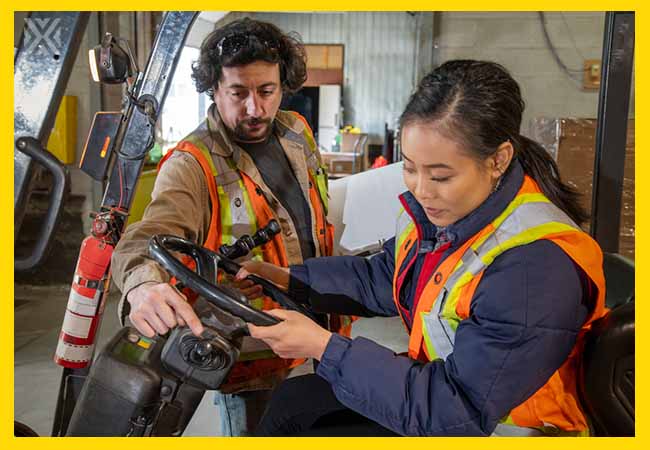Currency
October 26, 2023

The Challenging Nature of Workplace Safety
Resilience—that quality of never giving up and always moving forward—is one of the hallmarks of a safety leader.

It’s that time of year again—the time when I turn over the writing of this column (well, most of it) over to you, the readers. I’ve conducted quite a few salary surveys over the years, and I long ago learned that readers love to hear what their fellow industry peers are thinking. EHS professionals never fail to impress me with their willingness—sometimes eagerness—to share their thoughts about their jobs and profession, as you’ll see in the sampling of comments below.
The EHS TodayNational Safety & Salary Survey is kind of like a virtual focus group, offering a direct conduit between our audience of safety leaders and their peers. The survey offers respondents the chance to opine—anonymously—about anything and everything safety-related. As you would imagine, many of the comments we received the past couple of years were heavily focused on pandemic-related concerns, so this year is the first time this decade where COVID didn’t dominate the list of “biggest challenges.”
So what is on the minds and in the hearts of safety professionals in 2023? Let’s find out…
Resilience—that quality of never giving up and always moving forward—is one of the hallmarks of a safety leader.

It’s that time of year again—the time when I turn over the writing of this column (well, most of it) over to you, the readers. I’ve conducted quite a few salary surveys over the years, and I long ago learned that readers love to hear what their fellow industry peers are thinking. EHS professionals never fail to impress me with their willingness—sometimes eagerness—to share their thoughts about their jobs and profession, as you’ll see in the sampling of comments below.
The EHS TodayNational Safety & Salary Survey is kind of like a virtual focus group, offering a direct conduit between our audience of safety leaders and their peers. The survey offers respondents the chance to opine—anonymously—about anything and everything safety-related. As you would imagine, many of the comments we received the past couple of years were heavily focused on pandemic-related concerns, so this year is the first time this decade where COVID didn’t dominate the list of “biggest challenges.”
So what is on the minds and in the hearts of safety professionals in 2023? Let’s find out…
The biggest problem with the safety profession is burnout. There are too many skilled and motivated safety professionals leaving the profession due to a plethora of issues, ranging from lack of support from their employers to lack of buy-in from the workers they are now supporting. We should work harder to identify how to find and ultimately support those professionals who are at their wit’s end.
Safety is a community effort. We strive for the same thing. The most effective and efficient production is when it’s done most safely. Safety shouldn’t be brand-loyal. The safety department should be the bridge between companies and competitors.
The EHS profession is too fractured. We should be an all-encompassing profession consisting of EHS professionals like the AMA [American Medical Association], which includes many disciplines but still allows individual professional groupings unique to their expertise. Since we’re so fractured, we have minimal weight in political issues.
"Safety Third” continues to predominate across many industries and clients.
The regulators and special interest safety groups appear to be led by social justice issues, which have been distracting them from their primary mission and function. This is a detriment for safety professionals who rely on these organizations for education, networking and professional growth.
Safety is more than making employees follow the rules. Safety is having personal conversations with employees. It is important, as a safety professional, to be able to listen well and to be able to say, “I don’t have the answer for that, but I will find it,” and then do it with follow-up. I love to use the phrase, “Go home better than when you came to work!” How? By going home uninjured and having earned at least eight hours of pay. Hence, we are better!
As a one-person EHS department with no definitive budget, you have to be creative in how you keep your team members safe.
Safety is not always the #1 priority of management. Dollars dictate what gets done, and safety is at the bottom of the list. Organizations need to start budgeting for safety as a line item so they can share with their staff that they care about safety.
I enjoy my job. It’s challenging. If I can change one employee’s point of view on a single safety concept, I have succeeded for that day.
It’s important to prioritize safety and overcome any resistance to it, as neglecting it can have terrible consequences. In order to ensure a safe environment, everyone must be on board and engaged. Unfortunately, many safety professionals are not compensated adequately, leading to a culture of compliance rather than proactive safety measures.
Safety needs to adapt more to technology and get with the times in the adoption of AI, wearables and real-time data analytics. The EHS profession is strong, but we need to modernize our approach to safety.
I love safety. I feel it’s a very rewarding job to be helping people stay safe at work. It’s also very frustrating when people don’t listen to the things you are trying to teach them, or when top management doesn’t support the training or initiatives.
EHS often feels like the story of Sisyphus.
Laboriously pushing a boulder up a mountain, only to have it slip from your fingers and roll back down, and then you try to do it all over again—that might be a fit metaphor for the worklife of a safety professional. Despite all the training sessions and PPE and cutting-edge technologies provided to employees, workplace incidents still happen. The “road to zero injuries” journey may indeed be as mythical as Sisyphus. And yet, confronted by so many challenges, safety leaders keep at it, doing what they do best every single day—keeping workers safe from harm, while protecting their organization’s financial and reputational health. That kind of resilience deserves to be celebrated, so kudos to all of you!









